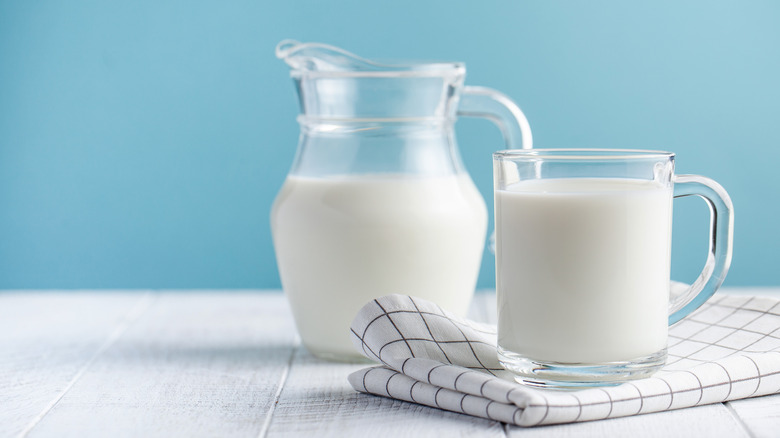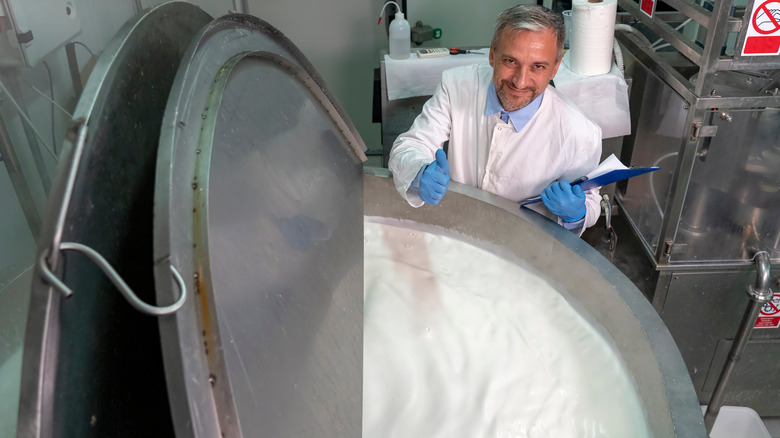Why Does Raw Milk Taste Different From Pasteurized Milk?
Until the 1900s, raw milk — aka unpasteurized milk — was accepted as fit for human consumption. This changed due to the spread of cattle-borne tuberculosis in the same era, according to the National Library of Medicine. As time went on, milk processing technology in the form of pasteurization emerged to avert the risk of milk-borne disease.
While the reasons for this stringent protocol were appreciated, it seems that modern-day public opinion is making a U-turn. There is a growing belief that raw milk is supposedly better for you and that pasteurization has become redundant now that the threat of bovine tuberculosis is no more, per Healthline. Still, some states, including Delaware, don't allow the sales of raw milk due to health concerns.
However, the main differences between today's raw milk and pasteurized milk are all about taste and texture, according to Food Safety News. It has a thicker consistency, has a bit more color to it, and smells like malt, but the most-appreciated aspect of fresh raw milk is its taste. Raw milk is sweeter and creamier than pasteurized milk.
What makes raw milk taste different?
Cow and goat fodder play a role in the taste of raw milk. Once the milk is pasteurized, meanwhile, the taste of the fodder becomes imperceptible. "You don't get that natural, grassy flavor with conventional milk," Hawthorne Valley creamery manager Jeremy Shapiro explained to Martha Stewart in 2020.
The longer milk stands in an unconsumed state, the more it will change — and by change, we mean curdle, ferment, or go rancid. Temperature contributes to this and, to a certain point, acts as a catalyst. The combination of time and temperature makes up the pasteurization process where milk is exposed to high temperatures for short periods and then cooled again. This action kills the good bacteria, known as cultures, according to Bon Appétit, and proofs the milk of harmful microparasites like E. coli and listeria without destroying vitamins and proteins that are in the milk.
Essentially, pasteurization bolsters the milk's longevity at the expense of taste and texture. The longer the milk is exposed to high temperatures in this process, the more neutral its taste becomes. As such, dairy farmers are consistently trying to find the balance between safety and taste.

